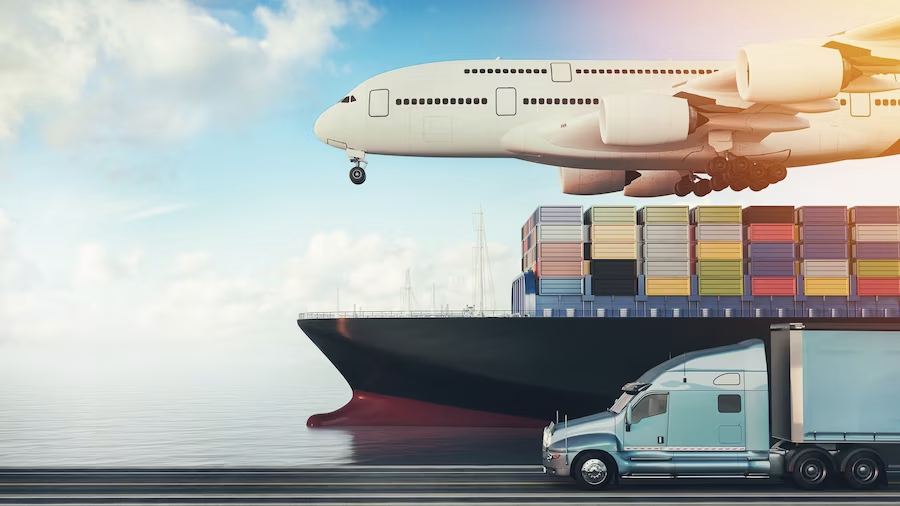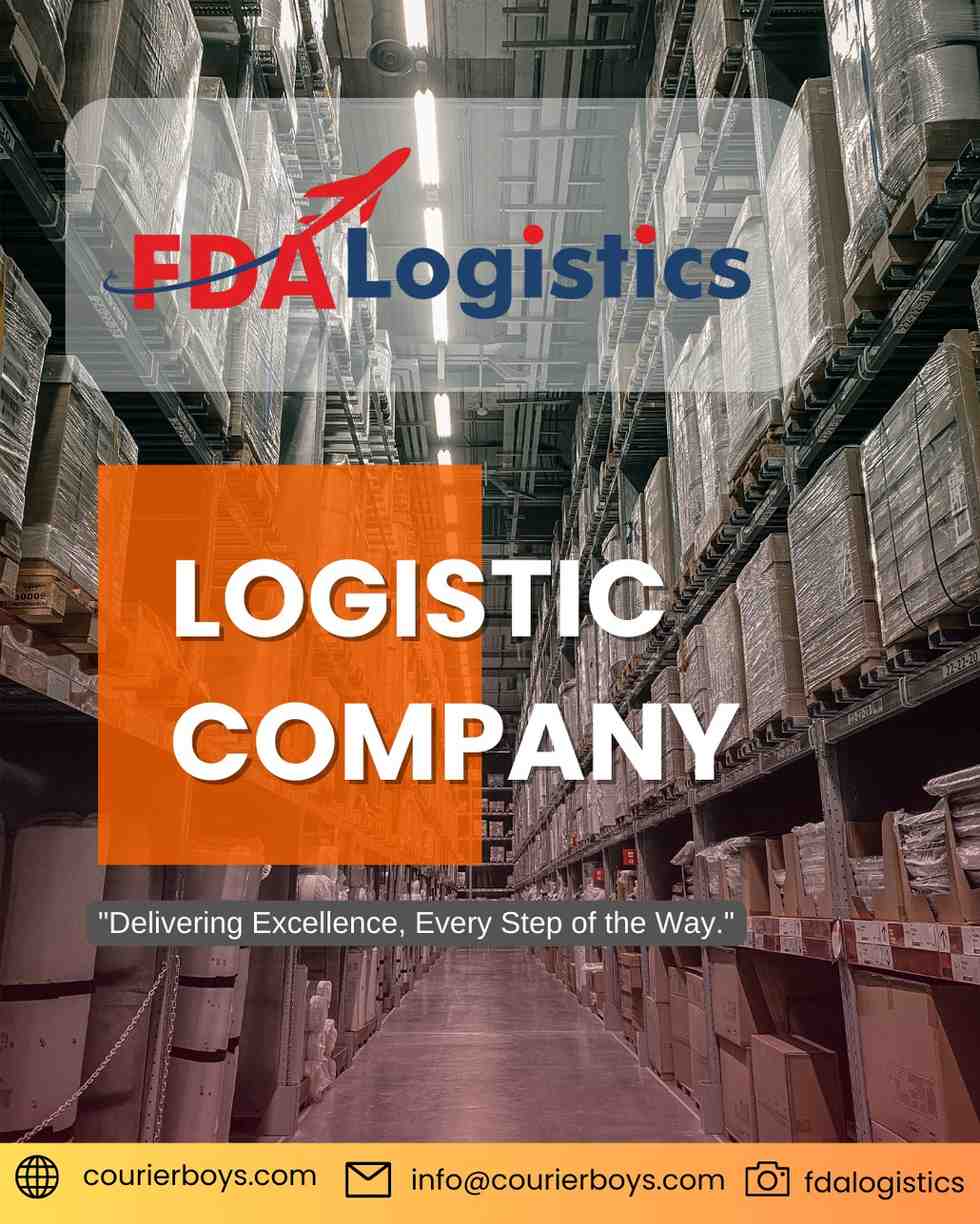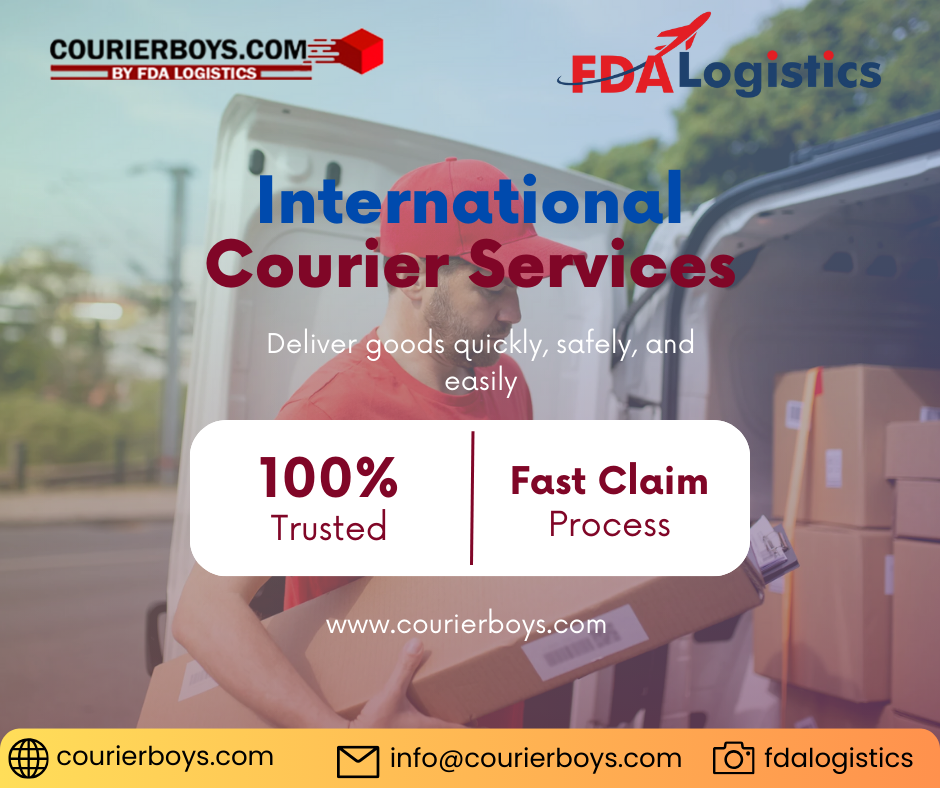You’ve probably heard about AI changing the world, but did you know it’s also shaking things up in export logistics? From automating paperwork to predicting delivery delays, AI is cutting through the chaos and making international shipping a whole lot smarter—and faster too. If you’ve ever struggled to track a shipment or deal with last-minute customs issues, AI is here to be your new best friend.
By using machine learning, companies can now predict demand trends, optimize routes, and even flag risks before they become a problem. This means fewer headaches for you and faster deliveries for your customers—something that’s becoming more crucial as Import and Export trends continue to evolve across global markets.
You also get real-time tracking, AI-powered customer support, and predictive analytics that help make smarter shipping decisions. It’s not just tech talk—it’s real help that makes your export journey smoother, cheaper, and way more efficient.
Predictive Analytics for Weight Management in Export Logistics
When it comes to international shipping, every gram matters—literally. You might not notice it at first, but weight can quietly eat away at your shipping budget, especially when you’re dealing with different carriers, packaging standards, and ever-changing Import and Export trends. That’s where predictive analytics steps in, wearing a superhero cape made of data and algorithms.
Predictive analytics is basically like having a crystal ball for your shipments. It studies past shipping data, packaging behavior, product density, and even seasonal variations to help you make smarter decisions about how your goods are packed and shipped. Let’s break down exactly how it makes your export life easier—and your logistics costs lighter.
Say Goodbye to Overpacking (and Overpaying)
You’ve probably been there—wrapping your goods in layers and layers of protection only to get hit with high volumetric charges. While safety is important, overpacking can add unnecessary weight and volume to your shipments, which means you’re paying for air.
Predictive analytics uses your past shipping data to identify what types of packaging work best for different products. So, instead of guessing how much padding a product needs, you get data-backed recommendations. You’ll know whether you can downsize that box or use lighter filler materials without risking damage. This makes a real difference, especially when you’re shipping in bulk or across long distances where Import and Export trends demand more efficiency and cost control.
Smarter Forecasts, Leaner Loads
Wouldn’t it be nice to know how much your shipment is likely to weigh before you even start packing it? That’s exactly what predictive analytics does. It doesn’t just look at what’s being shipped—it takes into account everything from historical shipment weights to seasonal product demand and packing behaviors.
You get a clear picture of how much your load should weigh and whether you’re about to cross any pricing thresholds. It’s like getting an early warning system for your shipping costs, helping you avoid surprises at the warehouse or during customs clearance. This becomes especially helpful when trying to navigate the highs and lows of Import and Export trends, where price fluctuations can hit fast and hard.
By forecasting weights in advance, you can plan better, load smarter, and make the most of every inch and kilo in your shipment. Whether you’re working with containers, pallets, or air cargo, predictive tools help you get the balance right every time.
Real-Time Adjustments That Save You Money
Let’s face it: things don’t always go as planned. Sometimes, last-minute order changes or packaging hiccups can throw your entire shipping schedule—and budget—off track. This is where predictive analytics really shines. It updates its suggestions in real time based on the latest data, so you can make quick decisions that keep everything running smoothly.
Imagine your team is packing a last-minute order, and you realize the weight is going over the expected limit. Instead of repacking everything from scratch, predictive tools can suggest which items to shift, how to rearrange them, or even recommend lighter alternatives if they’re available. These little tweaks can add up to huge savings over time, especially when you’re managing multiple shipments across various regions.
Real-time insights also make your export operations more agile, which is a big win when Import and Export trends shift overnight due to global demand, trade policies, or fuel prices.
The Bigger Picture: Data-Driven, Cost-Friendly Shipping
Using predictive analytics for weight management isn’t just about numbers—it’s about strategy. You gain control over your shipping costs, reduce waste, and free up valuable space in your containers or trucks. Plus, when your logistics are lean and efficient, your customers get faster deliveries and fewer delays.
As global Import and Export trends continue to evolve, having data-driven tools like predictive analytics by your side will help you stay one step ahead of the competition. You’ll be better prepared to adapt to changes in shipping rates, customs requirements, and packaging regulations across different countries.
Whether you’re a seasoned exporter or just starting your logistics journey, weight management with predictive analytics is like having a silent partner who watches your back, crunches the numbers, and keeps your shipments lean, mean, and ready to move.
AI in Fleet Optimization for Heavy Goods
When it comes to moving heavy goods, every route, every truck, and every fuel refill counts. You’re not just sending stuff from Point A to Point B—you’re managing a giant, rolling puzzle that involves timing, fuel, wear-and-tear, and sometimes even the weather. That’s why more and more businesses are turning to artificial intelligence to help them crack the code of fleet optimization. And trust me, once you get AI on board, there’s no going back to the old ways.
Whether you’re running a small export operation or managing a massive logistics chain, AI helps you streamline your fleet for maximum efficiency. It’s all about fewer delays, lower fuel bills, and happier clients. Let’s dive into how this tech magic actually works for heavy goods transport—especially in today’s fast-changing world of Import and Export trends.
Smart Routing: No More Guesswork on the Go
Let’s face it—GPS alone just doesn’t cut it anymore. Sure, it gets your trucks to their destinations, but it doesn’t help when there’s sudden traffic, bad road conditions, or last-minute delivery changes. That’s where AI-powered smart routing steps in.
With real-time traffic data, road condition analysis, and delivery windows all factored in, AI helps plan the most efficient route for every trip. You no longer have to worry about whether the driver will hit unexpected delays or spend extra hours stuck in traffic. AI can suggest alternate routes, reroute deliveries mid-journey, and even recommend optimal delivery sequences based on changing conditions.
This is especially helpful when dealing with heavy goods, where delays are costlier and trickier to manage. In the world of Import and Export trends, where timing is everything, smart routing gives you a real edge—literally cutting corners to save time and fuel.
Load Optimization: More Cargo, Fewer Trips
You’ve probably loaded a truck and thought, “Could we have fit more in there?” AI answers that question for you—accurately and efficiently.
Fleet optimization using AI doesn’t just help you plan where your trucks go—it tells you how to pack them better. It analyzes the size, weight, fragility, and destination of each item to recommend the best way to load your vehicles. That means fewer half-full trucks, reduced trips, and way lower fuel usage.
Plus, for exporters managing heavy-duty cargo like machinery, equipment, or bulk items, the right balance of weight distribution can prevent mechanical issues and make driving safer. The AI even considers legal weight limits for different roads and countries, which saves you from unexpected fines or legal headaches.
In an era where Import and Export trends are pushing businesses to operate leaner and greener, better load management can seriously boost your bottom line.
Predictive Maintenance: Fix It Before It Breaks
Nobody likes a surprise breakdown—especially when your truck is loaded with thousands of kilos of goods on a tight deadline. AI steps in here too, monitoring every vehicle’s health in real time through sensors and performance history.
It spots patterns that indicate something might go wrong soon—like tire wear, engine strain, or brake issues—and alerts your team before it actually happens. This predictive maintenance can reduce downtime, extend vehicle life, and ensure your deliveries stay on track.
And let’s be honest, fewer breakdowns also mean less panic and fewer angry customer calls. In a world where global Import and Export trends are constantly shifting, being reliable is your best competitive advantage. AI keeps your fleet rolling smoothly, so you can focus on scaling, not scrambling.
The AI Advantage: Big Gains for Big Loads
Using AI for fleet optimization isn’t just about shaving off a few hours or saving some fuel—it transforms how you manage logistics entirely. You get better visibility, smarter decisions, and the kind of control that used to feel impossible. For heavy goods in particular, this kind of fine-tuned planning can prevent costly errors and delays that eat into your profits.
As global Import and Export trends continue to shift with rising fuel prices, stricter regulations, and increasing customer expectations, AI gives you the adaptability to thrive in a competitive landscape.
You don’t have to be a tech genius to benefit either—many platforms offer user-friendly dashboards, mobile updates, and auto-generated insights so you can make smarter decisions on the fly. Whether you’re shipping industrial equipment, construction materials, or anything that weighs more than your average parcel, AI turns your fleet into a well-oiled, data-driven machine.
Smart Warehousing for Light Exports
You might think warehousing is just about stacking boxes neatly and waiting for trucks to pick them up—but not anymore. If you’re in the light exports game, your warehouse can now be a high-tech command center that keeps your goods moving faster, cheaper, and smarter. Thanks to smart warehousing, what used to be a storage room is now a strategic powerhouse that’s deeply connected to today’s shifting Import and Export trends.
Whether you’re shipping handmade accessories, skincare products, electronics, or lightweight textiles, managing space, speed, and accuracy matters more than ever. With smart tools, automation, and data-driven systems, you don’t just store your goods—you optimize their entire export journey from shelf to shipment.
Automation That Works While You Sleep
Imagine this: you wake up and find out your orders have already been picked, packed, labeled, and queued for dispatch—without you lifting a finger. That’s what smart warehousing makes possible through automation. Conveyor belts, robotic arms, and barcode scanners do the heavy lifting (well, light lifting in your case), helping you speed up the process without human error.
Instead of hiring more hands for every order spike, your automated system handles routine tasks on its own—saving you both time and labor costs. It also helps reduce packing mistakes, meaning fewer returns and happier customers. In today’s competitive export space, where light products need to move fast, automation helps you stay ahead of changing Import and Export trends without constantly burning out your team.
Inventory Management That’s Always One Step Ahead
If you’ve ever played hide-and-seek with your stock, you’ll love what smart inventory systems can do. They don’t just tell you where your products are—they predict when you’ll run low, suggest reorder points, and even spot patterns in your best-sellers.
Smart warehousing uses AI and real-time tracking to monitor every item in your facility, right down to its exact bin location. This means no more misplaced goods, no more over-ordering, and definitely no more “we thought we had it in stock” moments.
For light exports, this is gold. You can pack more orders accurately, reduce your holding costs, and respond quickly when demand spikes—especially during seasonal Import and Export trends like festival seasons, global sales, or flash deals. You stay lean, quick, and ready to ship without breaking a sweat.
Faster Turnarounds, Happier Customers
Let’s be honest—no one likes waiting weeks for a small product to arrive, especially when it could’ve shipped in days. Smart warehousing helps you move products from shelf to shipment in record time, thanks to better layout planning, zone picking, and real-time order syncing.
By connecting your warehouse software with your e-commerce, CRM, and export platforms, orders are processed instantly. Your team knows what to pack, how to pack it, and where it’s headed before the customer even finishes their coffee.
And guess what? This lightning-fast turnaround gives you an edge, especially in global markets where delivery speed often decides the sale. As Import and Export trends lean towards more efficient, customer-focused logistics, having a smart warehouse isn’t a bonus—it’s your secret weapon.
Challenges in Real-Time Export Visibility
In an ideal world, you’d know exactly where your shipment is at all times—whether it’s at the port, in the air, or waiting at customs. But let’s be real: the journey from warehouse to overseas buyer isn’t always that smooth. Even with all the tech out there, getting real-time export visibility comes with its own set of quirky (and sometimes frustrating) challenges.
As global Import and Export trends keep pushing for speed and transparency, visibility becomes more than just a buzzword—it’s a necessity. But achieving that full, live view of your shipment? That’s where the struggle gets real.
Too Many Players, Not Enough Coordination
Your export journey usually involves multiple hands—freight forwarders, customs brokers, shipping lines, warehouse teams, and last-mile partners. Everyone has their own system, their own data, and their own way of doing things. Getting all of them to sync up and share information in real-time? That’s like trying to organize a flash mob with people who don’t speak the same language.
When data isn’t flowing freely, you end up with delays, confusion, and lots of “we’re checking with our logistics partner” emails. Without a unified system, real-time tracking feels more like guesswork than science.
Technology Gaps (Yes, They Still Exist!)
You’d be surprised how many parts of the export chain are still running on spreadsheets, emails, and even handwritten records. While your system might be smart and digital, someone in the chain might still be updating cargo status manually once a day—if you’re lucky.
This lack of digitization in some regions or companies creates serious blind spots. Your tracking tools are only as good as the weakest tech link in the chain. And when your container is sitting on a dock somewhere and no one knows exactly where? That’s not exactly what you want when Import and Export trends are demanding faster, more transparent deliveries.
Inconsistent Data and Tracking Standards
Every logistics company has their own way of recording and sharing tracking information. Some offer GPS-level updates every few minutes, while others simply tell you when a shipment left and when it arrived. That’s it.
This inconsistency makes it tough to create a reliable, real-time dashboard for your exports. Without standardized data, your fancy tracking software might still show your goods “in transit” while they’re actually stuck in customs waiting for one missing document. So much for real-time visibility!
Customs and Border Delays Are Still a Mystery
Even with tracking tech, the moment your shipment hits customs, everything can go dark. Regulations, inspections, paperwork errors—these are all black holes in the export journey. You often won’t get updates until things are resolved, which could be hours, days, or longer depending on the country.
For exporters dealing with high-pressure timelines or sensitive products, this lack of visibility at borders can be incredibly frustrating. And as Import and Export trends continue to focus on customer satisfaction and predictability, this unpredictability sticks out like a sore thumb.
Balancing Expectations with Reality
Let’s be honest—everyone wants a live feed of their shipment, but the real world is messy. Between technology limitations, human error, and unpredictable regulations, full export visibility remains a work in progress.
That said, things are improving fast. As more exporters demand transparency and logistics companies feel the pressure to modernize, better platforms, smarter sensors, and AI-powered tools are entering the game.
For now, the key is to invest in smart tracking systems, work with partners who prioritize digital transparency, and keep realistic expectations. After all, even the best tracking can’t fix a customs delay—but it can at least tell you it’s happening.



